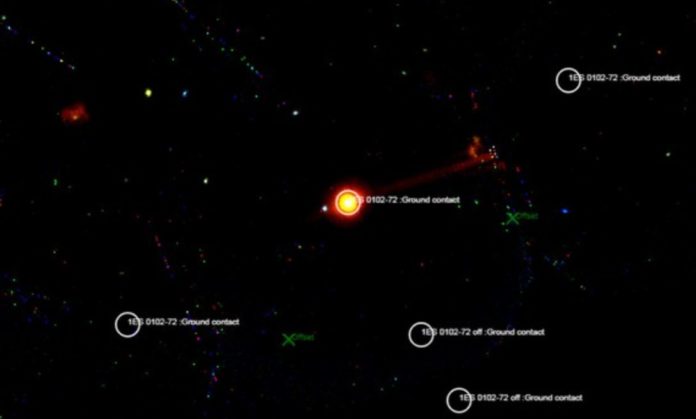Observations on the Russian-German space X-ray telescope “Spektr-RG” have made it possible to definitively confirm that the xMMU J010429.4-723136 system refers to the type of massive binary of the Be-star and neutron star.
Spektr-RG is a joint project of scientists from Russia and Germany to study the sky in a soft X-ray range. The main task of the device is to compile a review of the whole sky. Its telescope recently began to perform after reaching the calculated trajectory around the Lagrange point.
In addition to survey observations, scientists point the tool at other objects. In particular, they observed the supernova remnant 1E0102.2-7219 located in the Small Magellanic Cloud. This source has a constant flux in the photon energy range of several kilo electron-volts, which allows it to be used for calibrating x-ray equipment.
The telegram reports that during observations 1E0102.2-7219 “Spektr-RG” recorded pulsations from periods of 164 seconds from another object caught in sight – XMMU J010429.4-723136. Together with the available information about this source, the new data makes it possible to unequivocally classify it as a rare type of binary of a be-star and a neutron star.
Previous observations suggest that XMMU J010429.4-723136 is a massive X-ray binary star. It is known that the flow in this range from the object has long-term variations of 400 times or more. From the theory, it follows that radiation with such properties can emit when the substance of an ordinary star flows into a compact neutron in a wide system.
The data in the optical range indicate that the orbital period of the system is 30 days, and an ordinary star in it belongs to the spectral class B1V. The data on short-term pulsations obtained with the help of Spectra-RG prove that the pulsar is a compact body in the system. Thus, the system is a pair of a Be-star and a neutron star, and the wind of an ordinary star forms a disk outside the orbital plane, flying through which the neutron star accretes this substance, which manifests itself in the form of an x-ray flash.
